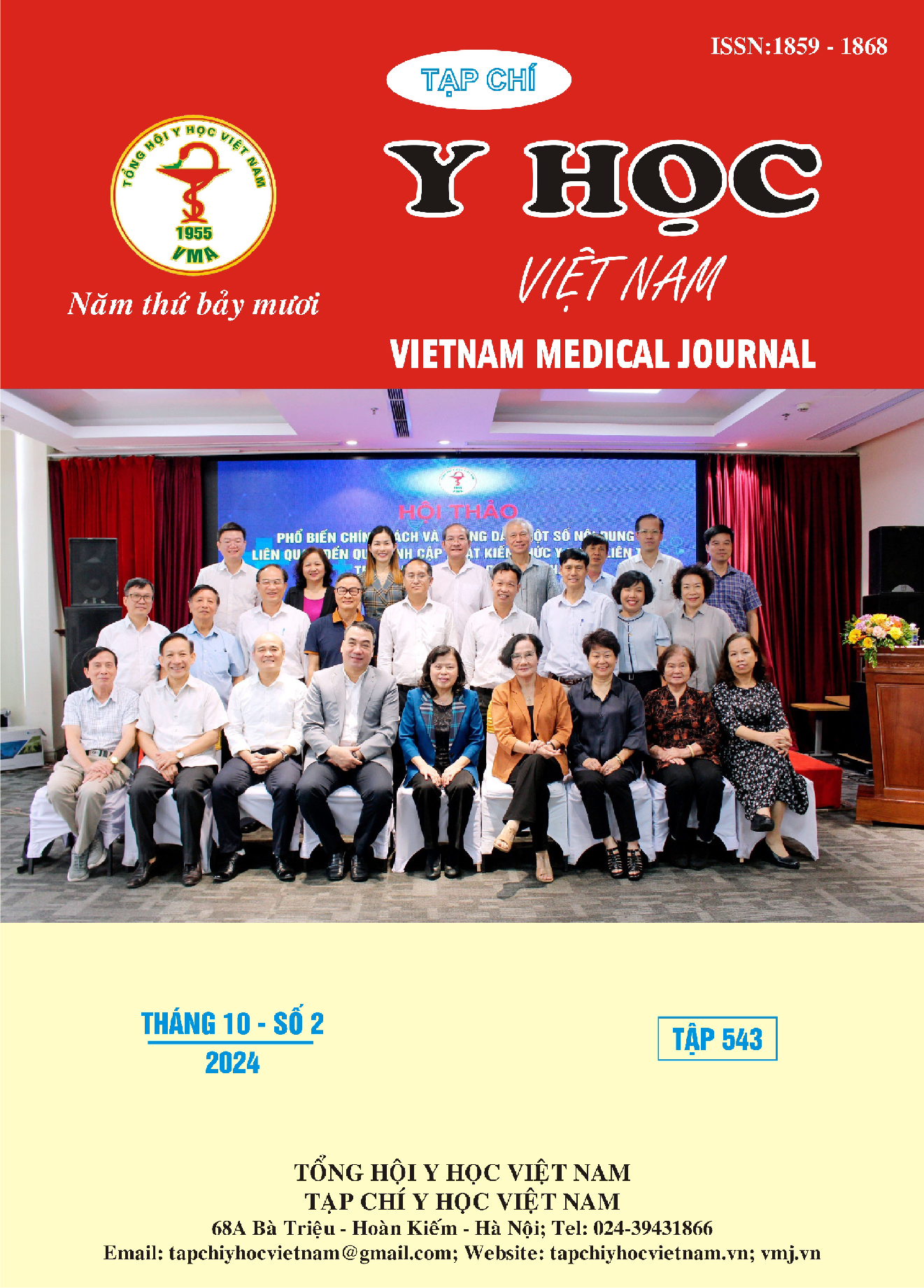TEETH, JAW AND CRANIAL-FACIAL SYSTEM FACTORS DURING DENTITION DEVELOPMENT AFFECTING THE FORMATION OF CLASS II MOLAR RELATIONSHIP IN PERMANENT DENTITION
Main Article Content
Abstract
Background: The first molar relationship in permanent dentition, according to Angle, is divided into three classifications: class I, class II, and class III. Class I constitutes a normal molar relationship, while class II and class III are considered abnormal. Studies have indicated that class II molar relationship (class II malocclusion) is fairly common in the population. Its development, from primary (T1) to mixed (T2) and permanent (T3) dentition, is complex and influenced by various factors, including teeth, arches, jaw structures, craniofacial morphology, and their growth patterns. Longitudinal studies exploring these dental and arch factors affecting the establishment of class II malocclusion are scarce globally. And in Vietnam, the scientific evidence on this issue has not yet been studied. Therefore, we conducted this research titled "Teeth, jaw and cranial-facial system factors during dentition development affecting the formation of class II molar relationship in permanent dentition”. Objectives: To describe the characteristics of teeth, jaw, and cranial-facial system at each stage (T1, T2, T3) and their development from T1, T2 to T3 in the group with class II molar relationship, compared to class I group in permanent dentition; and to identify the factors influencing the class II molar relationship in permanent dentition through logistic regression analysis. Materials and methods: The study was conducted on 25 children, evaluating a total of 50 dental arch sections from primary dentition (T1) through mixed dentition (T2) to permanent dentition (T3). Each child had a total of 3 pairs of stone models and 3 cephalometric radiographs following 3 stages: primary dentition (T1), mixed dentition (T2), and permanent dentition (T3). The study assessed 162 dental, jaw, and craniofacial variables on cephalometric radiographs at each stage (T1, T2, T3), and examined how the growth of these factors affects the molar relationship in permanent dentition. Results: Compared to class I group, the class II group showed following characteristics on cephalometric films: the anterior-posterior location of deciduous second molar is more anterior at T1; the ratio of the length of the lower jaw to the upper jaw is smaller; the middle facial height is larger while the lower facial height is smaller, which makes the ratio between the height of the middle face to the lower face larger in T2 and T3, and this ratio increases significantly from T2-T3. Logistic regression analysis identified three factors influencing the formation of a class II molar relationship, compared to a normal class I relationship in permanent dentition. Among them, there are 2 risk factors with OR greater than "1": (a) The more anteriorly-positioned deciduous second molar at T1 (OR = 1.8) and (b) The length ratio between lower and maxillary jaw at T2 (OR = 1.29). The remaining factor with OR < “1” is (c) the change in the ratio between the middle facial height and lower facial height from T1 to T2 (OR = 0.75). Based on these results, the regression equation is: R6 (T3) = 13.2 + 0.6a – 0.3b – 0.3c. Conclusion: Class II malocclusion has signs that can be detected early on cephalometric radiographs, and it is a complex syndrome influenced by multifactorial and multidimensional factors. Therefore, early detection, diagnosis, and intervention are crucial. Timely intervention should be based on the underlying causes and include multi-dimensional approaches, with consideration not only of teeth but also the growth of the jaw and craniofacial system.
Article Details
Keywords
: class II malocclusion, multifactor logistic regression
References
2. Arya B, Savara B, Thomas D. Prediction of first molar occlusion. American Journal of Orthodontics & Dentofacial Orthopedics. 1973; 63(6):610-621.
3. Baccetti T, Franchi L, McNamara JAJ, Tollaro I. Early dentofacial features of Class II malocclusion: a longitudinal study from the deciduous through the mixed dentition. Am J Orthod Dentofacial Orthop. 1997;111(5):502-9.
4. Barros SE, Chiqueto K, Janson G, Ferreira E. Factors influencing molar relationship behavior in the mixed dentition. Am J Orthod Dentofacial Orthop. 2015;148(5):782-92.
5. McNamara JAJ. Components of class II malocclusion in children 8-10 years of age. Angle Orthod. Jul 1981;51(3):177-202. doi:10.1043/ 0003-3219(1981)051<0177:Cocimi>2.0.Co;2
6. Proffit WR. Contemporary Orthodontics. 6th ed. Mosby; 2018.
7. Kim YE, Nanda RS, Sinha PK. Transition of molar relationships in different skeletal growth patterns. Am J Orthod Dentofacial Orthop. Mar 2002;121(3): 280-90. doi:10.1067/mod.2002. 119978
8. Riesmeijer AM, Prahl-Andersen B, Mascarenhas AK, Joo BH, Vig KW. A comparison of craniofacial Class I and Class II growth patterns. Am J Orthod Dentofacial Orthop. Apr 2004;125(4): 463-71. doi:10.1016/ j.ajodo.2003.05.012


